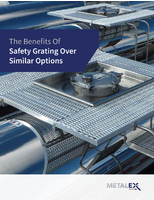AVANTECH Incoporated, Technology Experience Solutions

Avantech recently completed pilot testing in Glendale, CA that evaluated the use of Reduction, Coagulation, and Filtration for removal of hexavalent chromium {Cr(VI)} from contaminated groundwater. Figure 1 shows a simplified schematic of the RCF treatment process.
In this 2 gpm pump and treat pilot process, ferrous sulfate (FeSO4) solution was injected upstream of three reduction tanks with mixers. Each of the reduction tanks had a residence time of 15 minutes, thus allowing the reduction time to be varied from 15 to 45 minutes. By varying the reduction time, researches could determine the reaction time required for chromium to be reduced from Cr(VI) to Cr(III) and for iron to be oxidized from Fe(II) to Fe(III). The reduction tank effluent was collected and pumped through aeration columns. Aeration was used to ensure that all iron was converted to the Fe(III) form and to aid in coagulation of the chromium and iron precipitates. Each aeration column had a residence time of 6 minutes. The columns were valved in and out in a similar manner to the reduction tanks in an effort to determine the amount of aeration required for complete iron oxidation. Air has to be used for oxidation because stronger oxidants such as chlorine or potassium permanganate would convert the precipitated Cr(III) back to the soluble Cr(VI).
An anionic polymer was added downstream of the aeration columns to agglomerate the precipitated iron and chromium into small floc that could be easily filtered by the dual media filters. The dual media filters contained approximately 24 inches of anthracite over 12 inches of sand. The filters were backwashed after each test run, which sometimes lasted in excess of 24 continuous hours of operation. Product water was collected in a tank that overflowed to the local sewer. The water in the product water tank was used for backwashing the dual media filters. The backwash was collected in tank, mixed with a polymer, and then allowed to settle. The clarified supernate was transferred back to the feed of the system at a rate of no more than 5% of the feed flow and the flocculated/ settled solids were dewatered through filter media that was associated with the Flo-Trend passive dewatering system. Test results showed that RCF was successful in reducing Cr(VI) and removing total Cr to concentrations below 1 µg/L (i.e., the method reporting level). Removal of the total chromium contamination {Cr(III) + Cr(VI))} is important because it mitigates the potential of chromium being oxidized from the less hazardous Cr(III) to the more hazardous Cr(VI) at an uncontrolled downstream location.
Addition test findings are as follows:
• Filter run times of > 24 hours were achieved with a DP increase of only 0.5 psid.
• Filter backwash water was recycled to the influent tank and processed through the system without any problems. Therefore, no secondary wastewater required offsite treatment or discharge.
• Settled solids from the bottom of the backwash tank were removed from and dewatered in a passive Flo-Trend filter. The dewatering filtrate had metal concentrations of 0.3 g/L Cr(VI), 24 g/L total Cr, and 0.06 mg/L total iron.
Based on favorable test results, the City of Glendale is moving forward with demonstration scale components for removing the Cr(VI) from groundwater at greater than 100 gpm.
For more information please feel free to contact your local representative or Avantech directly. You can also find out more about Avantech’s products and services at our website www.avantechinc.com
Tracy A Barker
Principal Engineer
865-405-6387
TBarker@avantechinc.com
Gary A. Benda. Sr. VP of Business Development
803-467-4774




